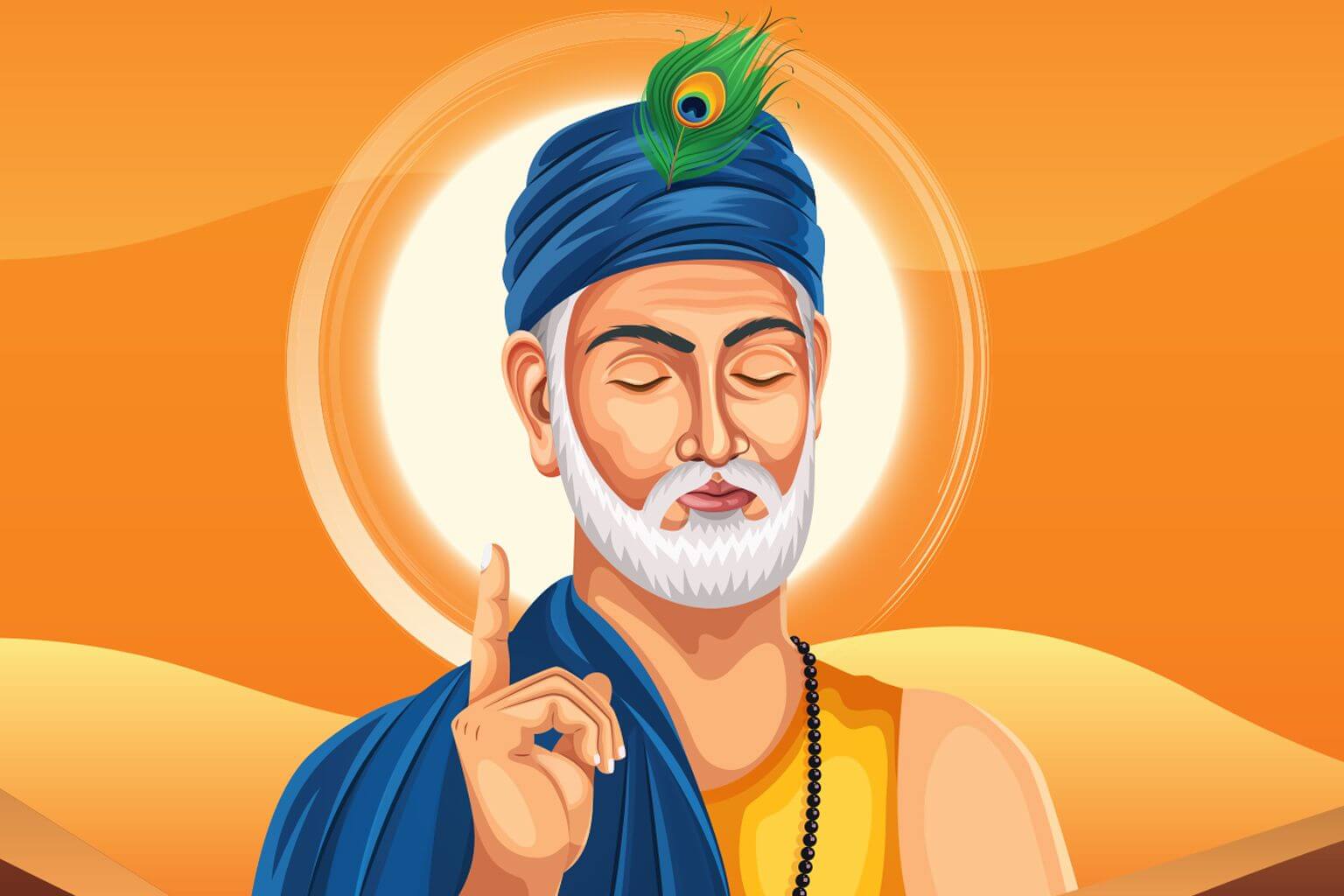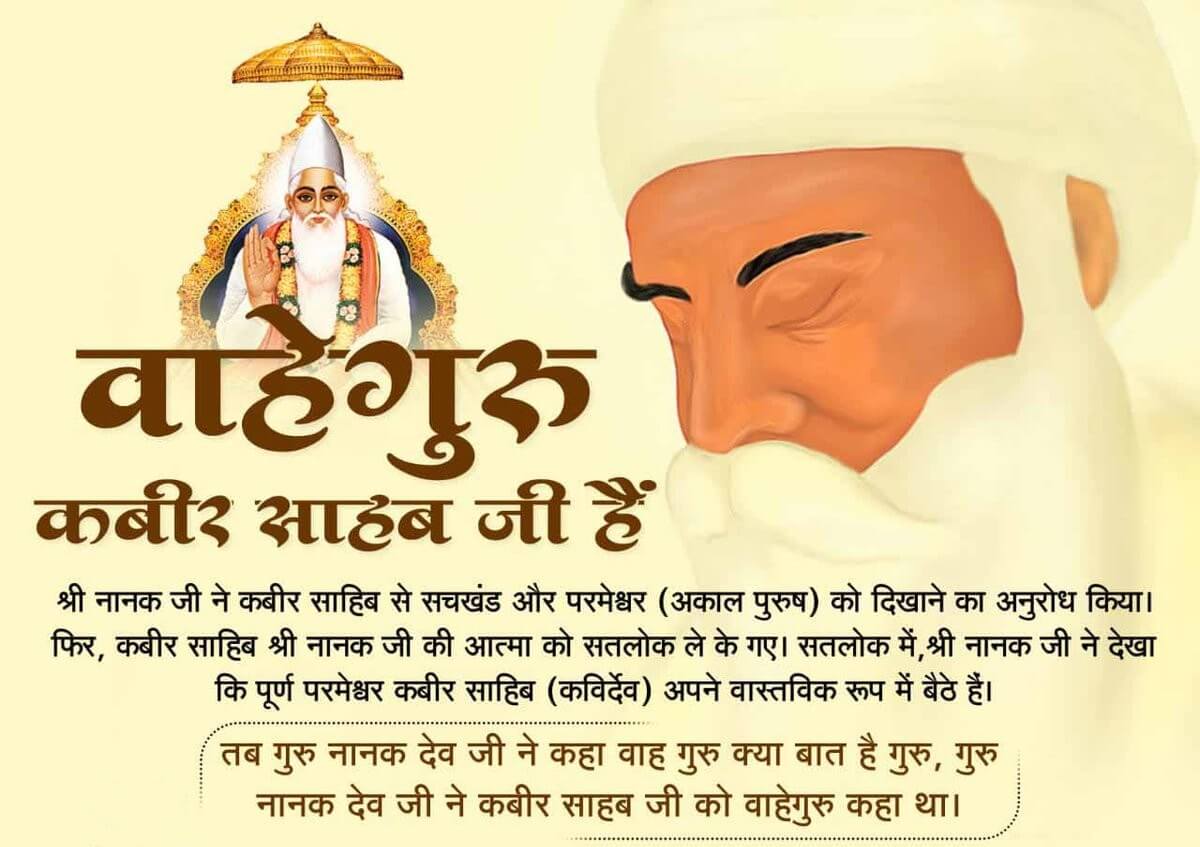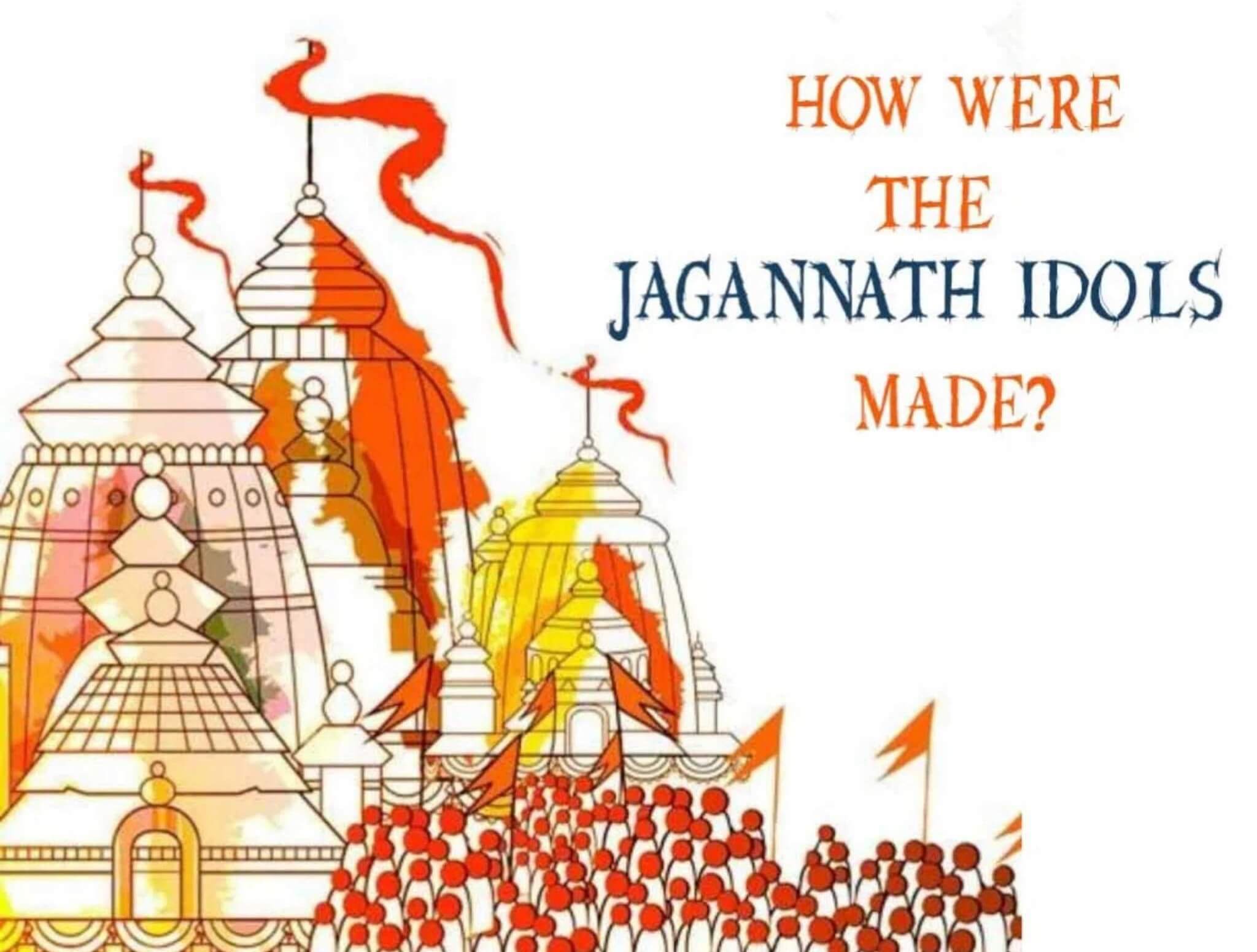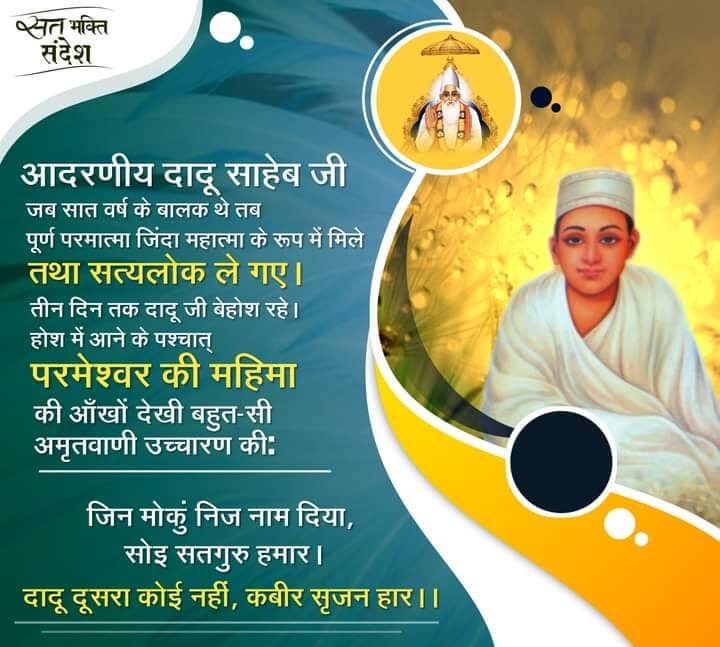Sant Kabir, a revered spiritual figure from Varanasi, holds a timeless legacy that continues to inspire seekers worldwide. Born in 1398 CE, Kabir’s life was a beacon of wisdom, challenging dogma and promoting unity among faiths. Known for his profound couplets (Dohas), Kabir emphasized devotion to the Supreme God over rituals, addressing universal truths that resonate across cultures and eras. His teachings are preserved in revered texts like the Sri Guru Granth Sahib and influence traditions such as Kabir Panth. With historical roots in Varanasi, Sant Kabir's name is not just linked to poetry and reform but also to divine revelation, as described in the Vedas, the Quran, and Sikh scriptures. Today, the spiritual teachings of Sant Kabir remain a guiding light for millions, offering clarity and insight into the path of true devotion and self-realization. Whether you seek wisdom in his verses or spiritual growth through his philosophy, exploring the life and teachings of Sant Kabir is a journey into the heart of eternal truth.
Sant Kabir 1398 - 1518 CE

Sant Kabir is the creator God. This is an undeniable fact. Kabir is translated as "Great" and this is another reason why the name of Supreme God remains hidden. This however, does not undermine the fact that the name of Supreme God is Kabir. This God Kabir appeared in 1398 CE as an infant in Varanasi and became renowned as Sant (Saint) Kabir. He ventured the earth for 120 years and departed in 1518 CE to his immortal abode Satlok.
During his tenure on earth, Sant Kabir left ample evidence in his speech that he was God Himself. This was bound into a Holy Scripture called Kabir Sagar. Later on Kabir Bijak was made out of it. Kabir Sagar is still available but is adulterated. To compensate for this, God Kabir appeared again in 1727 CE and met Garib Das ji and gave him the entire knowledge again. Garib Das ji managed to get the whole knowledge bound into a single scripture called Sat Granth Sahib of Garib Das ji. This scripture is full with the utmost divine knowlege about everything spiritual possible. It is a highly revered scripture.
Sant Kabir of Varanasi, born in 1398 CE and believed to have moved to Satlok in 1518 CE, is often regarded as one of the most profound mystics, poets, and social reformers in Indian history. Renowned for his thought-provoking couplets and verses, Kabir challenged societal norms, caste discrimination, and ritualistic practices, advocating instead for devotion to the formless God. His teachings, rooted in simplicity and truth, united followers from diverse backgrounds, including Hindus and Muslims. His name became synonymous with spirituality and reform, and his message resonated in the hearts of millions. However, viewing Kabir merely as a saint limits the true essence of his identity as revealed in holy scriptures. Evidence from sacred texts like the Vedas, the Quran, and the Sri Guru Granth Sahib points to a deeper, divine significance, identifying Kabir as the Supreme God.
The Rigveda (10:90:1-3) speaks of the "Param Purush" or Supreme Being, describing Him as eternal and self-existent—qualities that align with Kabir’s teachings and manifestations. The Quran (Surah Al-Furqan 25:52-59) mentions a being referred to as "Kabir," a name explicitly meaning "The Great" or "Supreme." Prophet Muhammad himself was directed to worship this Kabir as the eternal God. Similarly, the Sri Guru Granth Sahib (Page 721) acknowledges Kabir not only as a saint but as the eternal Creator, emphasizing, "Kabir is the Supreme Lord, the Creator of all." These references collectively transcend the perception of Kabir as a mortal saint, establishing him as the eternal and supreme being who descended to guide humanity. Kabir's transcendental journey, concluding in Satlok, further reinforces this divine identity, underscoring that he was not merely a reformer but the ultimate God manifesting in human form to enlighten the world. Thus, scriptures from different traditions converge to reveal that Kabir, the mystical figure of Varanasi, is indeed the Supreme Being who descended to guide lost souls to salvation.
Sant Kabir appears in every Yuga / Era
God Kabir, the Supreme Being, became renowned as Sant Kabir in Kalyuga, continuing His divine mission to guide humanity toward salvation. In every era, He has assumed different identities, fulfilling distinct roles to uphold righteousness and impart spiritual wisdom. In Satyuga, He appeared as Rishi Sat Sukrit; in Tretayuga, as Rishi Muninder; and in Dwaparyuga, as Rishi Karunamay. Each incarnation was marked by pivotal acts of divine intervention. For instance, in Tretayuga, God Kabir facilitated the construction of the bridge to Sri Lanka and initiated spiritual luminaries like Mandodari, Vibhishan, and Hanuman. During Dwaparyuga, He sanctified the Pandavas’ yagya, ensuring its success when His presence alone caused the conch to blow, granting them divine blessings. In Kalyuga, as Sant Kabir, He shared the complete knowledge of true worship and the path to liberation, particularly through His disciple Dharamdas. His eternal mission emphasizes that He is not just a saint but the Supreme God manifesting in human form across ages to guide souls to Satlok, the eternal abode.
In Kalyuga, God Kabir further demonstrated His divinity by reappearing in 1727 CE to initiate and empower Sant Garibdas Ji Maharaj, who was merely ten years old at the time. By imparting the sacred mantras and the true method of worship, He continued to illuminate the path to salvation for humanity. God Kabir’s unparalleled acts and teachings across the ages are not mere legends but a testament to His identity as the Supreme Creator. His revelations in scriptures like the Vedas, Quran, and Sri Guru Granth Sahib affirm His divine status, transcending the labels of saint or mystic. Whether appearing as Rishi Sat Sukrit, Rishi Karunamay, or Sant Kabir, His sole purpose remains constant: to rescue souls trapped in the cycle of birth and death and guide them toward the ultimate truth and eternal peace in Satlok.
Kabir is the Immortal God
God Kabir is Eternal and Immortal, a truth explicitly revealed through one of His most famous hymns, which establishes Him as the Supreme Master of the universe. This profound revelation occurred during a meeting with the revered yogi Gorakhnath, who, after much deliberation, finally posed the question of God Kabir's age. In response, God Kabir sang a divine hymn, offering an unambiguous declaration of His timelessness and supremacy over all creation:
Jo boojhe soii baavra, kya hai umar humaari |
Asankh yug prlay gaii, tab ke brahmchaari ||tek||
Koti Niranjan ho gaye, parlok sidhaari |
Hum to sadaa mehboob hain, svayam brahmchaari ||
Arbon to Brahma gaye, unanchaas koti Kanhaiya |
Saat koti Shambhu gaye, mor ek nahin palaiya ||
Kotin Narad ho gaye, Muhammad se chaari |
Devtan ki ginti nahin hai, kya srishti vichaari ||
Nahin buda nahin baalak, naahin koi bhaat bhikhaari |
Kahain Kabir sun ho Gorakh, yeh hai umr humaari ||
English translation:
- He who asks my age, is insane.
- Infinite dissolutions have passed, I have always remained.
- Ten million Niranjan (Kaal/Devil) have perished, I am however Immortal.
- Billions of Brahma have died and 490 million Vishnus.
- 70 million Shambhus (God Shiv) have died, but not a moment has passed for me.
- Tens of millions of diety Narad have passed away and countless Mohammad and his caliphs.
- Countless gods have died, what basis does this creation have.
- I am neither aged nor a child, nor am I a singer or a beggar
- Says Kabir hear, O Gorakh; such is my age.
Read full account of Gorakhnath and Kabir Sahib
In this divine verse, God Kabir reveals that countless cosmic cycles and dissolutions have come and gone, yet He has always remained unchanged, eternal, and self-existent. While millions of deities like Brahma, Vishnu, and Shiv have perished across the ages, and countless spiritual figures like Narad and even Muhammad have come and gone, God Kabir stands apart as the sole Immortal Being. He proclaims that He transcends age, time, and all worldly classifications, emphasizing His eternal nature and His unique position as the Supreme God. By addressing Gorakhnath directly, God Kabir not only demonstrates His divine knowledge but also affirms that He is beyond the limitations of creation, birth, and death. This hymn serves as a powerful testament to His immortality and His unchanging presence as the Creator and sustainer of all existence.
Literary Works Attributed to Sant Kabir
Saint Kabir, a 15th-century Indian mystic poet and saint, is credited with several literary works and compositions. These texts primarily reflect his philosophy, spiritual teachings, and reformist ideas. The most notable books and collections attributed to Saint Kabir include:
1. Kabir Sagar (Ocean of Kabir)
- Overview: A comprehensive scripture divided into multiple sections, detailing Kabir's teachings, spiritual conversations, and philosophical discourses.
- Key Chapters: Includes significant chapters like Kamal Bodh, Ugra Gita, and Agam Nigam Bodh.
- Content: Explores deep spiritual insights, the nature of God, and critiques of ritualistic practices.
2. Bijak (The Seedling)
- Overview: A collection of Kabir's couplets and hymns, considered one of the most authentic representations of his teachings.
- Key Themes: Self-realization, rejection of orthodoxy, and direct devotion to God.
- Languages: Written in Hindi, Bhojpuri, and Awadhi.
3. Sakhi Granth
- Overview: A compilation of sakhis (moral couplets) attributed to Kabir.
- Key Themes: Simple yet profound teachings aimed at guiding daily life and spirituality.
- Popular Lines: “Kal kare so aaj kar, aaj kare so ab.”
4. Kabir Granthawali
- Overview: A collection of Kabir’s works compiled by scholars and followers.
- Content: Includes sakhis, dohas (couplets), and padas (songs).
5. Anurag Sagar (The Ocean of Love)
- Overview: A metaphysical dialogue between Kabir and his disciple Dharamdas.
- Key Themes: The cosmic struggle between truth and illusion, creation, and the path to liberation.
- Special Note: Contains allegorical and symbolic narratives.
6. Shabdaavali (Collection of Hymns)
- Overview: A compilation of Kabir's devotional songs and hymns.
- Key Themes: Praises of God and critiques of religious dogmas and rituals.
7. Granth Sahib Contributions
- Overview: Several of Kabir's verses are included in the Guru Granth Sahib, the holy scripture of Sikhism.
- Key Themes: Unity of God, equality, and devotion.
Notable Features of Kabir’s Writings:
- Language: Kabir used a mix of Hindi, Awadhi, Bhojpuri, and Braj, making his teachings accessible to common people.
- Style: Simple, direct, and impactful, often employing metaphors, allegories, and satire.
- Themes: Critique of hypocrisy, casteism, and ritualism; advocacy of devotion to the Supreme God.
These works collectively form the foundation of Kabir’s legacy, continuing to inspire millions across faiths and cultures.
Conclusion
Sant Kabir, often regarded as a saint and mystic poet, is in reality God Kabir, the Supreme Creator, as revealed through His divine acts and eternal knowledge. Across the ages and scriptures, He has demonstrated His unparalleled divinity, from assuming various forms in different eras to guiding souls toward liberation. His teachings in the form of hymns and revelations provide profound insights into the eternal truth, proving that He transcends the limitations of mortality and creation. Scriptures like the Vedas, the Quran, and the Sri Guru Granth Sahib repeatedly affirm His supreme status, identifying Him as the eternal, self-existent God who has no beginning or end. God Kabir’s presence in Kalyuga as Sant Kabir was not merely to reform societal practices but to reestablish the path of true worship and connect humanity with the ultimate truth. His immortal essence and boundless compassion solidify His identity as the Supreme God, the eternal master of Satlok, who continues to guide and protect His devotees.



